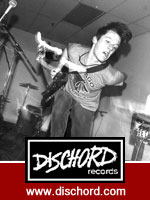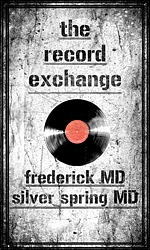
PHOTOS: DAVE BARNHOUSER | The folk rock of The Decemberists is probably best suited for theaters—ramshackle ones with patched curtains and vaudeville ads sewn on them, with flickering faltering footlights to illuminate their wistful songs and often costumed ballads of weird whimsey and shambling shanties.
By now, though, tours by the Portland, Ore., band demand bigger stages. And on a rainy Thursday, they projected way up the muddy hill at Merriweather Post Pavilion in Columbia, Md., where, at least under the roof of the amphitheater, their songs had a sunnier home. What lifted the show was the wealth of material from What a Terrible World, What A Beautiful World, their fine album from earlier this year, filled with solid individual songs rather than the overarching (and sometimes overbearing) thematic works of earlier works.

The Decemberists is largely Colin Meloy, his reedy voice and his evocative, often storytelling lyrics. So it’s fitting he began their long set alone with guitar doing the tongue in cheek opener from the new album, “The Singer Addresses His Audience,” which has some funny lines that the adoring crowd didn’t really laugh at. (Either they knew the joke or actually were the kind of people who “cut your hair in the style that our drummer wore in the video”).
The band joined in one by one as the song went on, and soon the full complement of five, augmented by two harmonizing singers, were on stage. It’s quite an able group, though they didn’t much get the spotlight, from Jenny Conlee on keyboards and accordion to Chris Funk on an assortment of stringed instruments (but usually electric guitar). And hey those backup singers were no slouches either—that was by god Kelly Hogan and Nora O’Connor of Bloodshot Records fame back there.
But it was all Meloy’s show, and it stuck wisely to the largely upbeat things on the new album, from “Calvary Captain” and “Make You Better” to “Carolina Low” and “A Beginning Song,” ending the main set with its weight of irony just as it ends the album. The show was structured such that it couldn’t take any alterations. Though the large crowd lumbered to its feet at one point, Meloy took note but informed them the next song would be a ballad anyway. They were up again soon enough with a show that kept things upbeat despite the largely acoustic instrumentation.
The show benefitted from blowing up the beautiful quilt-like album design by Carson Ellis that not just took on different coloration due to lighting, but had 3-D depth for frames of its various statue-like figures of cupids and globes.




And yet there was nothing to stop them from the mid-slow sludge of their stab at progressive rock from their recording low point, The Hazards of Love, which went from Conlee’s keyboard stylings out of the Rick Wakeman playbook to the thudding underscored anthems that veered toward Jethro Tull winning the metal Grammy territory. In fact, if “The Wanting Comes in Waves/Repaid” led directly to “Aqualung” instead of “The Rake’s Song,” at least they would have been honest about it.
True to the opening song, though, fans seemed to love it, pitching in on clapping in odd patterns when signaled or singing along.
When thousands swayed like whitecaps in the ocean-going encore finale of “The Mariner’s Revenge Song,” it was almost like a They Might Be Giants show in terms of adherence to goofy crowd participation. And though their new songs had risen above the need for such things, the band couldn’t help end the beloved tale with the big whale coming in to chomp everyone up.




It was a great show, though, especially compared to opener Father John Misty, who came out in vaguely Jim Morrison garb—dark beard and long hair, a white shirt cut down the chest, with sunglasses hanging on the V (despite the all day darkness and rain).
The former drummer for Fleet Foxes stopped short of Morrison like bellowing, though, on songs that veered from the kind of harmonies of his former band into harder rock stridency. He joked a little, sang from a prone position on the stage and hid his band even in the shadows than Meloy did.
Much of his success came from stagecraft: A big light up heart with the message: “No Photography.” Stating that so explicitly, in red rope lighting yet, only helped guarantee that people capture the moment and immediately post it.



















FATHER JOHN MISTY




















